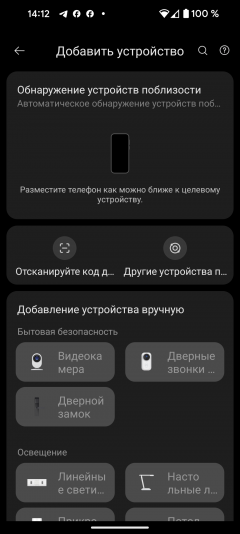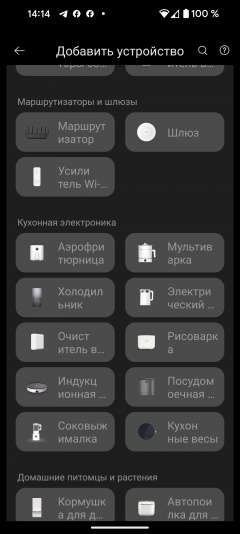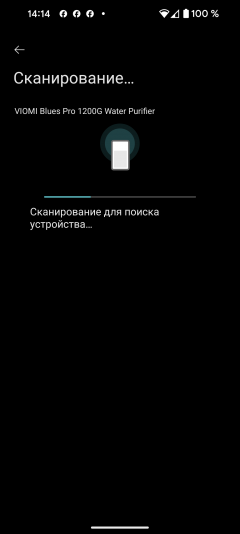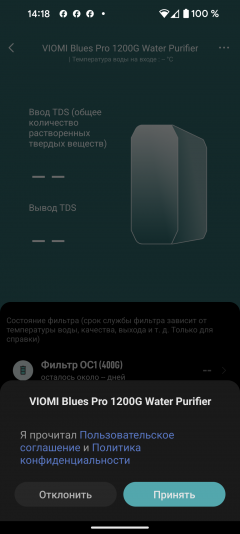Whether or not to use tap water without additional purification is a personal decision. It is important to remember that there are special household appliances that can effectively cope with this task, and their technologies are constantly being improved.
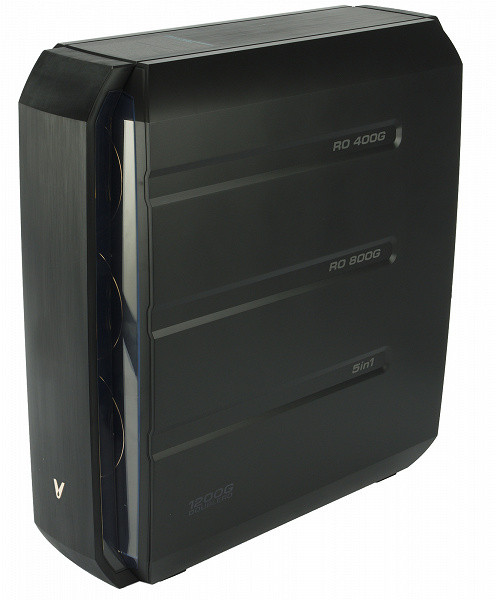
During the testing of the Viomi Blues Pro 1200G reverse osmosis water purifier, we encountered difficulties: in St. Petersburg, even in old houses, the water is too clean for demonstration tests. However, we managed to find an area where we conducted a demonstration test. In our review, you will learn how the water changes at the outlet and why you need a socket next to the sink.
Characteristics
| Manufacturer | Viomi |
|---|---|
| Model | Blues Pro 1200G |
| Type | reverse osmosis filter |
| Country of origin | China |
| Guarantee | 1 year |
| Filtration speed | 4.2 l/min |
| Number of purification stages | 8 |
| Size of filtered particles | 0.0001 µm |
| Post-cleaning and conditioning | No |
| Water softening | There is |
| Iron and chlorine removal | There is |
| Protection against bacteria | There is |
| Elimination of odors | There is |
| Mechanical cleaning | There is |
| Maximum water temperature | 38 °C |
| Control from smartphone | Mi Home (Wi-Fi) |
| Weight | 13.7 kg |
| Dimensions (W×H×D) | 163×443×431 mm |
| Length of network cable | 1.2 m |
Equipment
The reverse osmosis system comes in a brown cardboard box with a minimum of information: the manufacturer's logo, model name and shipping instructions.
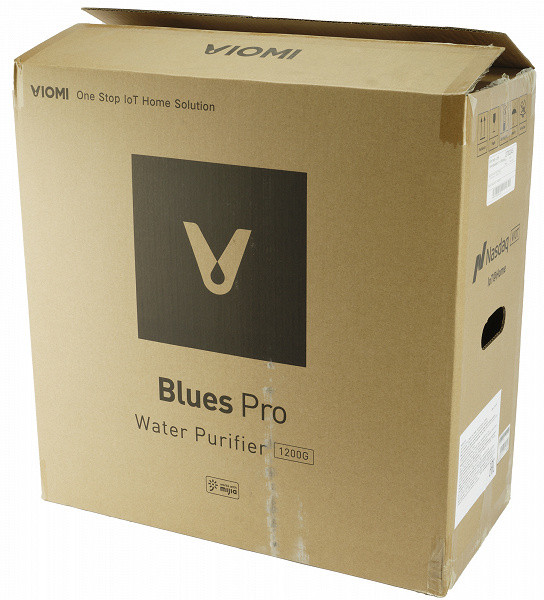
We learned the serial number and manufacturer's contact information from a small sticker on the end of the box. When we opened it, we found the following inside:
- a filter with three cartridges installed
- a tap for purified water
- an installation kit with plastic pipes, a metal tee and fittings
- a user manual
At first glance
The Viomi Blues Pro 1200G looks more like a computer case than a traditional filtration system. With its dark matte plastic, magnetic lid with transparent elements and gold logo, it is clearly different from traditional filters that are usually hidden under the sink next to the trash can.

The appearance of the device gives a sense of seriousness: this is modern high-tech equipment, the development of which involved the efforts of not only water treatment specialists and industrial designers, but also user interface developers and programmers. However, let's not get ahead of ourselves.
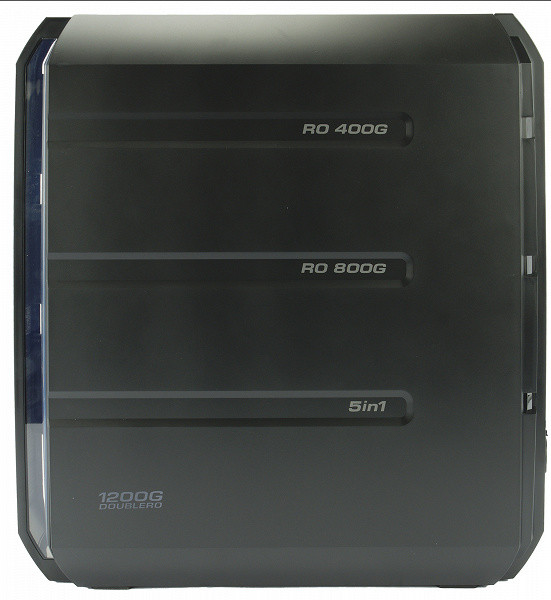
On the right side of the case, in decorative recesses, the manufacturer has placed the names of the cartridges used (which we will examine in more detail below), and in the lower right corner — the device model index.

Detailed technical specifications are provided on the back of the device. Here, on a small white sticker, the user will also find the serial number and production date.
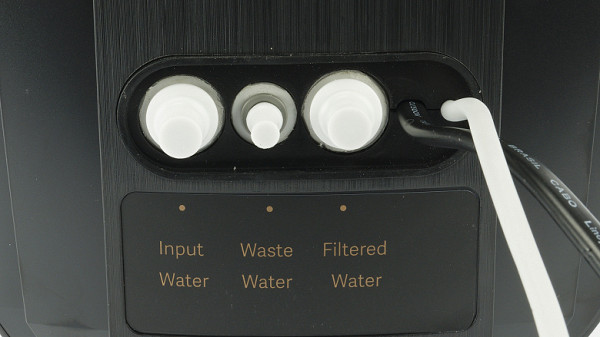
There are three connection ports at the bottom of the back wall. The first is for the main water supply, the second drains waste water into the sewer, and the third is used to connect a tap with clean water. The black wire coming out of the case is for powering the device (yes, Viomi Blues Pro 1200G requires a power supply), and the gray wire is connected to the tap via a special connector.

The front wall of the filter is covered with a decorative cover with a magnetic fastening.

It serves not only as a decoration: the manufacturer took care to place detailed instructions for servicing the device on its inner side.

This quick start guide in Russian serves as a quick start guide for the device. It provides basic information for initial familiarization with the device and its operation. The traditional paper manual is also included and will be discussed in the corresponding chapter.

Most of the front panel is occupied by round covers of filter cartridges: our device has three of them. Three control buttons are located under them.
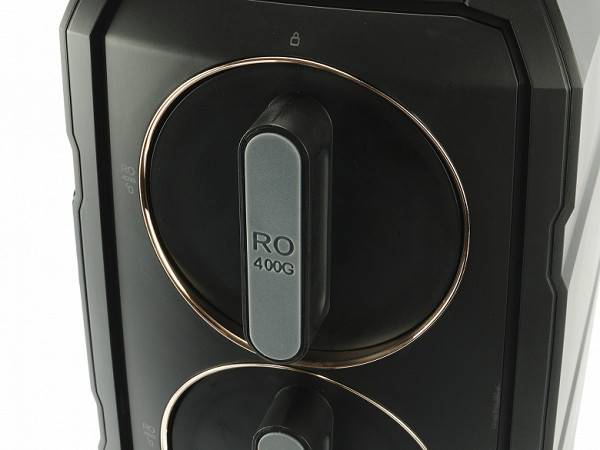
Convenient cartridge handles allow you to remove the cartridges by simply turning them 90° in the direction indicated by the markings on the body.
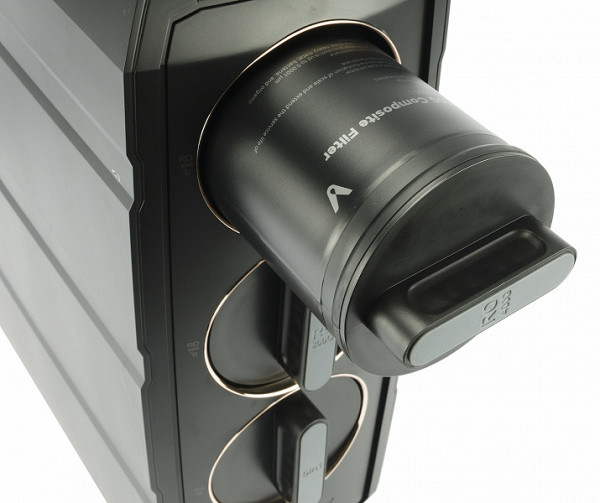
After this, the structure can be pulled towards you and removed: the replacement procedure is well thought out, convenient and does not require any effort.

Viomi Blues Pro 1200G uses three cartridges. In the first stage, water coming from the tap is purified by a composite filter «5 in 1». This filter removes large particles such as scale and rust, and also absorbs residual chlorine, odors and dyes. The filter resource is 7200 liters, which is approximately equivalent to two years of operation.
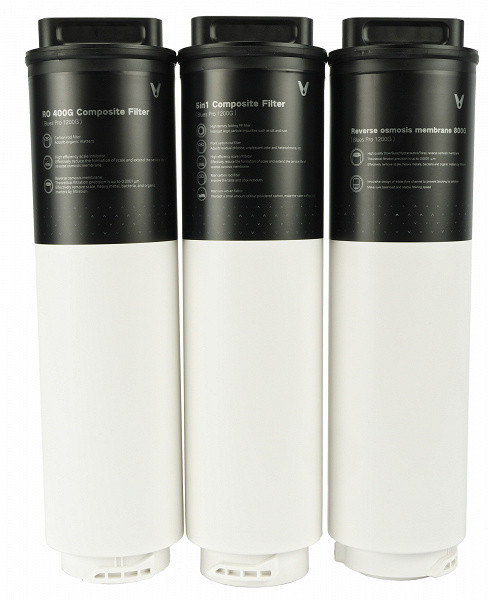
After that, the water is directed to the main reverse osmosis filter. The RO-800G Pro cartridge effectively removes bacteria, heavy metals, organic compounds and other contaminants. Its resource is 10,800 liters or 96 months of operation.
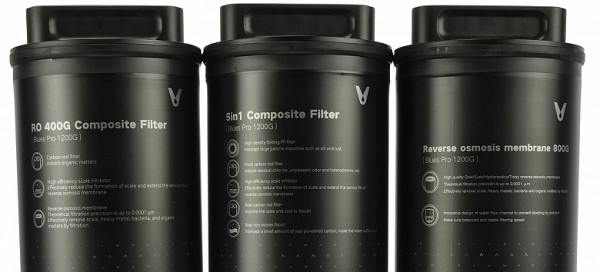
In the third stage, the water passes through an additional reverse osmosis membrane in the RO-400G Pro cartridge. This fine filter, equipped with an internal activated carbon rod, provides high-quality water purification from particles up to 0.0001 microns in size. The filter resource is 10,800 liters, but it is recommended to replace it at least every 24 months.

Clean filtered water is supplied to the tap, which is cut into the countertop, and water with residual contaminants is drained from the filter into the sewer through a separate hose.

In addition to the usual water connection, an electrical cable with a sealed four-pin socket comes out of the bottom of the tap. This cable ensures the operation of the indicator on the top end of the tap, which we will examine in more detail after connecting the device.
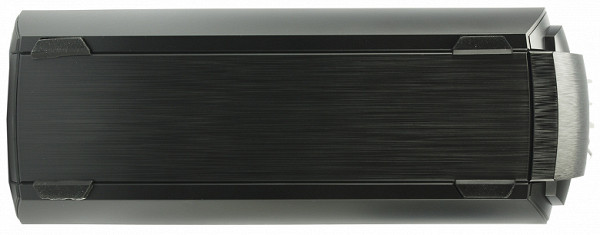
The body rests on four rubber feet, preventing slipping on smooth surfaces.

The device comes complete with a set of plastic pipes with quick-release fittings.
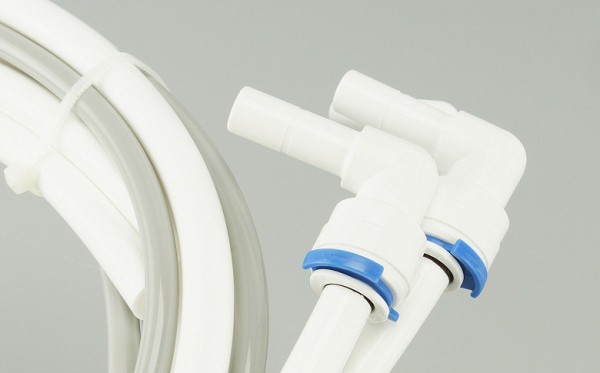
The operating principle of the connectors is familiar to anyone who has encountered the installation of water purification systems: a plastic tube is inserted into a collet mount and clamped with a retaining ring.

The tubes are provided with markings that help to correctly assemble the structure.

To connect to the cold water supply main, a metal tee tap with external and internal threads of ¾″ is used.
However, the kit does not include a clamp for connecting the drain pipe to the sewer pipe. Before installation, you will need to purchase this element yourself.
Instructions
The user manual is a 16-page A5 brochure, printed on thick glossy paper with excellent quality.

The instructions in Russian contain many easy-to-read illustrations explaining all the intricacies of installing and operating the filter.
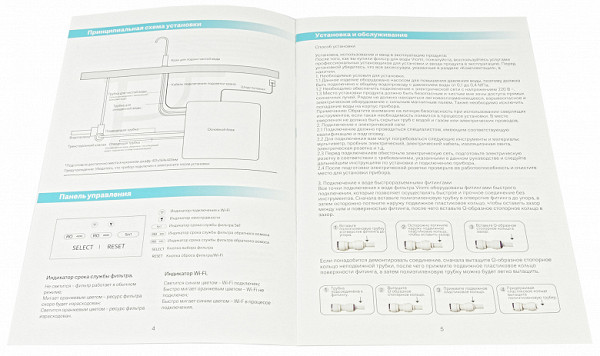
The document contains detailed instructions on preparing the device for operation, recommendations for servicing and replacing cartridges, as well as tips on installing a mobile application and troubleshooting possible malfunctions.
At the end of the brochure, the technical characteristics of the device and diagrams are given: electrical and hydraulic.
Control
The device does not require any control as such. Two touch buttons «Select» and «Reset» are designed to reset the service interval when replacing filter cartridges.
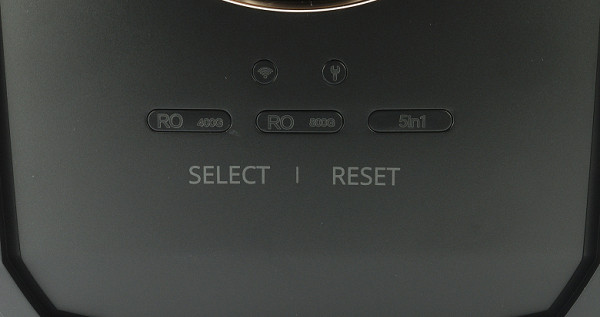
After replacing the filter, you need to select the desired cartridge with the first button, and the corresponding indicators on the control panel will light up in sequence. Then you should reset the «mileage» counter using the second button.
The LEDs at the top of the device display the activity of the wireless interface and the presence of faults.
Simultaneous pressing of both touch buttons activates the pairing mode with the mobile application.
Control from smartphone
Viomi Blues Pro 1200G is equipped with a wireless network interface, which allows you to control the device via your smartphone. The ability to connect a water filter to Wi-Fi surprised us, as this is the first time we encounter such functionality. Therefore, it was especially interesting to explore its capabilities.
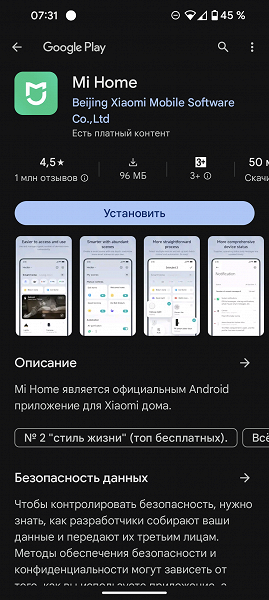
To work with the system, the manufacturer suggests using the Mi Home app from Beijing Xiaomi Mobile Software Company. This popular app has over 50 million downloads and a rating of 4.5 out of 5 based on over 1.23 million reviews. We have already connected various devices to this app in previous reviews.
The app requires registration with confirmation of email address and mobile phone number, and Russian regional settings are used to work with the filter.
To start synchronization, you need to click on the «Add device» button in the upper right corner of the main screen of the application. Automatic detection of the device did not work, so I had to select it manually. Viomi Blues Pro 1200G can be found in the «Kitchen appliances» / «Water purifiers» section.

To reset network settings and activate pairing mode, press and hold both sensors on the control panel until the wireless interface indicator starts flashing.
The app will then request data to connect to your home network. At this time, the filter will create a temporary network with the SSID «yunmi-waterpuri-s20_miapE5FE», which you must connect to manually to transfer the new settings to the device.

The procedure takes no more than a couple of minutes and is completed without any difficulties.
The final step in the setup process requires the user to select a room and name for the new device, as well as accept the manufacturer's user agreement and privacy policy.

The main screen of the application displays information about the resource of all three filter cartridges in percentage and days. This information is useful, but the ability to monitor the efficiency of the device is especially interesting: data from the built-in TDS meters is shown next to the schematic image.
The filter measures the water temperature and the total salt content in milligrams per liter at the inlet and outlet of the device. The attached screenshot shows that the water coming from our cold water supply line has an increased mineral content: 404 mg / l (with a norm of 75-250 mg / l). Water after filtration has a TDS of only 15 mg / l — almost like distilled.
Pollution data is updated in real time, and to view the history of water consumption and quality for a week, month or year, you can click the «More details» button.
In the settings section, the user can transfer control of the device to family members, change its name, reassign it to another room, update the firmware and view help information.
Operation
Practical testing of water purifiers in St. Petersburg is a difficult task: the quality of tap water in our city generally meets sanitary requirements, and you can drink it from the tap in almost any area. Even in old houses, it is difficult to find water that requires filtration.
After several laboratory tests, we decided to conduct tests in Kronstadt. The water here comes from the Lomonosovsky district, known for its hard water due to the presence of limestone, and the condition of the old pipes exacerbates the problem. Therefore, we chose this place to test the device.
Installation of Viomi Blues Pro 1200G is not difficult: it can be installed by anyone with basic plumbing skills and tools. The only difference from other filters is the need to connect not only to the water supply and sewerage system, but also to the power grid.
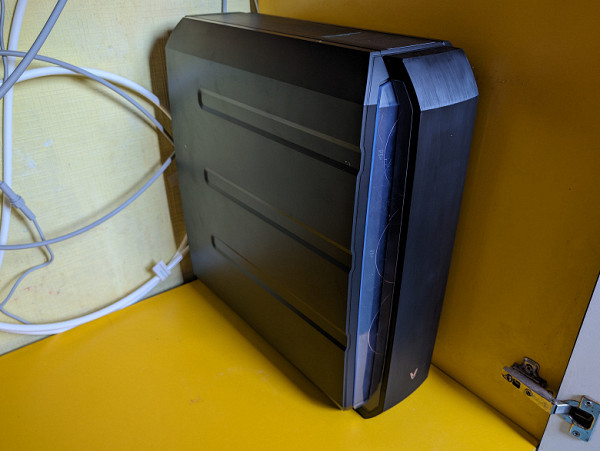
The purifier body fits easily into a kitchen cabinet under the sink, and the horizontal installation of the cartridges makes them easy to replace. The length of the plastic pipes included in the kit is more than sufficient for a standard installation. The excess can either be cut off or neatly rolled up in case the system is moved.
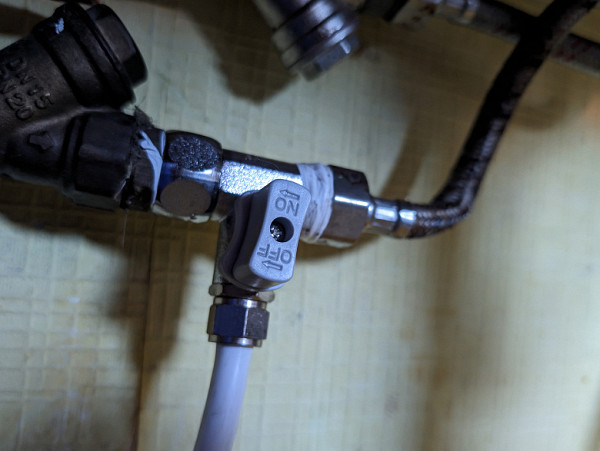
To connect to the cold water supply, the included tee tap with internal and external threads of ¾″ is used. We installed it before the flexible hose feeding the main kitchen tap, without the need for significant changes to the existing system.
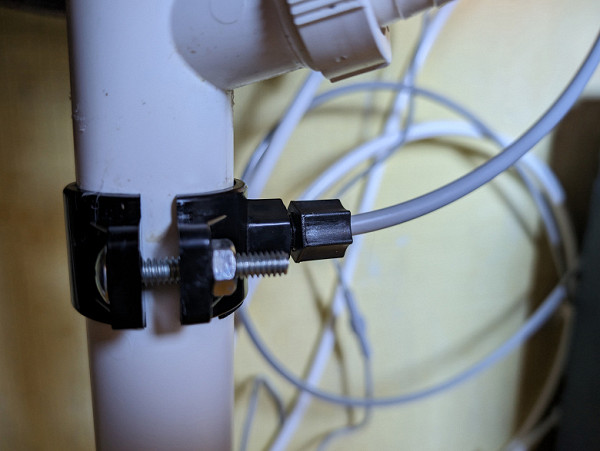
The waste water from the osmotic filter must be discharged into the sewer. The kit includes a plastic tube for this, but the clamp for connecting to the waste pipe is missing and had to be purchased separately.

The installation of the system is completed by connecting the clean water tap, which must be connected not only to the plastic tube, but also to the interface cable coming out of the filter housing. This cable enables the operation of the LCD screen on the tap, which informs the user of the system status.

The blue color of the indicator indicates that the filter is working properly, while the orange color warns of wear on one of the cartridges. Slow flashing of the orange light indicates that there is no connection with the device, while fast flashing indicates that the system is overheating.
After installation, the system must be flushed. The first portions of water may contain bubbles and carbon dust. The manufacturer also recommends pouring as much clean water through the filter as possible due to the food glycerin contained in the reverse osmosis membrane. During the first day, you should turn on the tap at least 12 times every two hours, pouring water for 20 minutes, or pump a large amount of water at once.
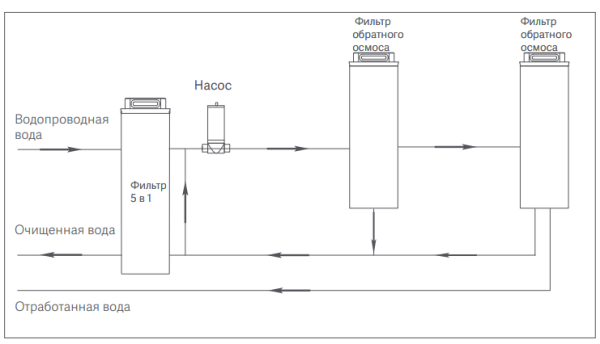
One unexpected feature that confused us a little is the sound of the electric pump installed before the pre-filter. Unlike most similar systems, the Viomi Blues Pro 1200G uses an additional pump to increase the pressure in the system. It is activated automatically when the tap is opened and turns off when it is closed. About a minute after the water supply stops, the pump briefly turns on again, which is probably due to the osmosis flushing process. According to the manufacturer, the 5-in-1 filter also enriches the water with glycerin to improve the taste. Although we were not able to test this directly, the water after the filter does indeed have a pleasant taste.
Care
The service life of the filters depends on the quality of the source water and the frequency of use of the device. The manufacturer recommends replacing the 5-in-1 and RO 400 G cartridges at least every 24 months, and the RO 800G filter should be replaced every 96 months.
After installing a new cartridge, you need to reset the filter service interval and flush the system with plenty of water.
Our measurements
To evaluate the efficiency of the Viomi Blues Pro 1200G filter, we conducted a comprehensive water analysis before and after filtration. The measurements were performed using the MGA-915 atomic absorption spectrometer, the Kapel-105M capillary electrophoresis system, the Hanna pH 211 pH meter, the Volta microwave mineralizer, and the KFK-3 photocolorimeter.
The results of the analysis are shown in the table below. We also provide the SanPiN 1.2.3684-21 standards for drinking water from centralized water supply as a reference.
| Indicator | Without filtration | After reverse osmosis | SanPiN norm |
|---|---|---|---|
| Color, degrees | 13 | 5 | ≤20 |
| Suspended solids, mg/l | 0.3 | 0.2 | ≤1.5 |
| Smell, score | 1 | 1 | ≤2 |
| pH | 7.5 | 7.1 | 6-9 |
| Alkalinity, mg-eq/l | 6.3 | 0,1 | |
| Total hardness, mg-eq/l | 16.0 | 0.25 | ≤7 |
| Calcium, mg/l | 175.3 | 7.5 | ≤140 |
| Magnesium, mg/l | 20.8 | 0.5 | ≤85 |
| Total iron, mg/l | 0.21 | 0.069 | ≤0.3 |
| Permanganate oxidizability, mgO/l | 1,2 | 0.8 | ≤5 |
| Chlorides, mg/l | 150.6 | 1,1 | ≤350 |
| Nitrates, mg/l | 0,001 | 0,001 | ≤45 |
| Ammonium, mg/l | 0.08 | 0.55 | ≤2 |
| Manganese, mg/l | 0.033 | 0.004 | ≤0.1 |
| Residual aluminum, mg/l | 0.084 | 0,071 | ≤0.5 |
| Copper, mg/l | 0.028 | 0.028 | 1 |
| Zinc, mg/l | 0.069 | 0.069 | 5 |
| Lead, mg/l | 0,001 | 0,001 | 0.03 |
| Sulfates, mg/l | 0.5 | 0.5 | 500 |
| Nitrites, mg/l | 0.005 | 0,001 | 3 |
The tap water used for the test showed a significant excess of total hardness and a high calcium content (175 mg/l with a permissible limit of 140 mg/l). Such water is not recommended for drinking or using in household appliances. The content of magnesium (20.8 mg/l), total iron (0.21 mg/l) and chlorides (150.6 mg/l) was also quite high. The sulfate, nitrate and nitrite levels were close to zero.
After reverse osmosis filtration, the calcium content decreased from 175.3 mg/l to 7.5 mg/l, which is more than 23 times less. The total water hardness decreased from 16 m-eq/l to 0.25, which is also a significant improvement.
The content of magnesium, total iron and chlorides decreased (the latter almost 150 times), and the color of the water improved (from 13 to 5 degrees). The level of trace elements (manganese, residual aluminum, copper, zinc) remained low, and the ammonium content increased slightly, but remains within safe limits.
The pH of the water decreased from 7.5 to 7.1, which is still within the optimal range.
The issue of additional mineralization of water purified by osmosis remains controversial. Such devices remove minerals that are necessary for the body, which must be compensated for in another way, for example, by adding them to food or taking them as supplements.
In this case, unfiltered water was dangerous to health due to high hardness and excess calcium, which can lead to problems with the cardiovascular system, digestive organs and excretory functions of the body.
Water filtration is necessary in this case. It is better to discuss compensation for the lack of minerals with a doctor or nutritionist.
The filtration capacity was about 4 liters per minute, which corresponds to the declared characteristics. The noise level during operation of the device does not exceed 43 dB.
Conclusions
The Viomi Blues Pro 1200G water purifier with a reverse osmosis filter is a modern and high-tech water purification device. Its thoughtful design and convenient construction, as well as the results of laboratory tests, confirm its high efficiency.
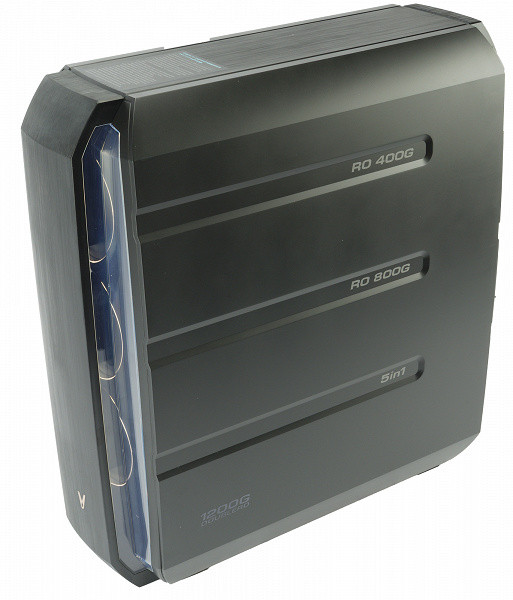
The filter cartridges included in the Viomi Blues Pro 1200G kit have a long service life, and their horizontal placement simplifies and speeds up the replacement process.
The mobile application provides a convenient way to monitor the filter status: it shows water parameters in real time, including readings from built-in TDS meters and liquid temperature. Information about the filter status can also be obtained from the color indicator on the clean water tap.
The filter demonstrates good performance due to the effective design of membranes and a built-in pump. However, using the pump leads to noticeable noise during operation.
The lack of a mineralizer can be considered a disadvantage: with prolonged use of water from an osmotic filter, the user may need to compensate for the lack of useful minerals through food or special supplements.
Pros:
- excellent filtration efficiency
- good performance
- modern technological design
- long life of filter cartridges
- convenient mobile application
Cons:
- relatively high price
- noticeable noise during operation
- lack of mineralizer

